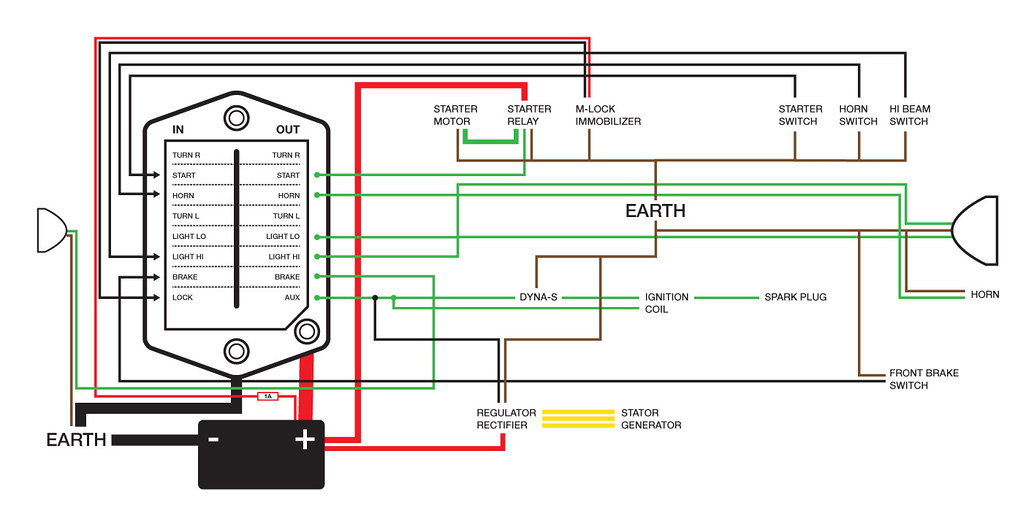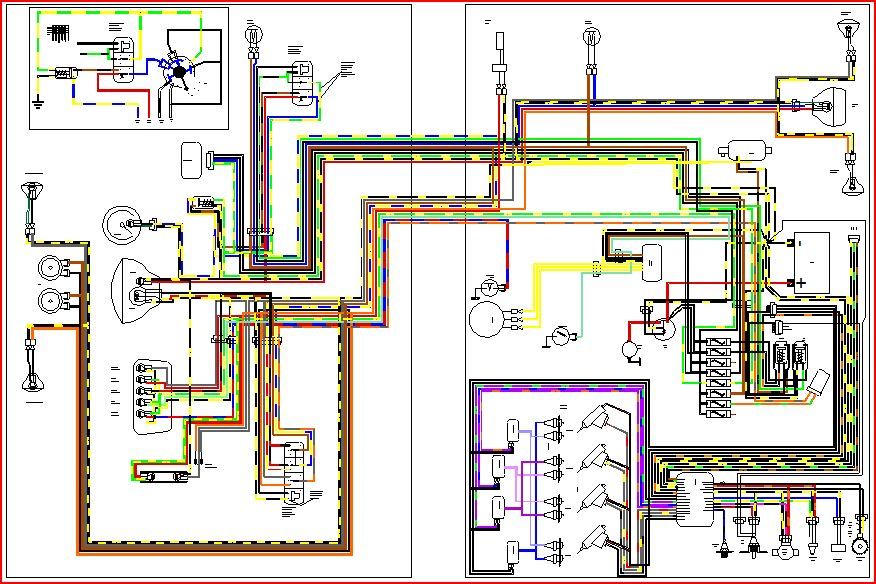I'm going to start making a custom loom (pictured below) for my Z800 build and need to know what gauge cable to use for each part. I'm using an M-Unit to control electrics and the ring terminals are quite small on it.

If someone could fill in the blanks as below, I'd be much obliged:
Headlamp Relay to Headlamp = 6mm / 20amp
So here is the list, grouped into sub looms:
STARTER CIRCUIT
1) Starter Switch to M-Unit =
2) Starter Switch EARTH =
3) M-Unit to Starter Relay =
4) Starter Relay to Starter Motor =
5) Battery to Starter Relay =
6) Starter Motor EARTH =
7) Starter Relay EARTH =
8) M-Lock Immobiliser = SUPPLIED
9) M-Lock Immobiliser EARTH =
LIGHTS
1) Headlamp switch to M-Unit =
2) M-Unit to Headlamp =
3) Headlamp EARTH =
4) Brake Switches to M-Unit =
5) M-Unit to Brake Light =
HORN
1) Horn Switch to M-Unit =
2) M-Unit to Horn =
3) Horn EARTH =
IGNITION CIRCUIT
1) Dyna-S = INCLUDED
2) M-Unit to Coils =
3) Reg/Rect to Coils / Dyna-S =
CHARGING
1) Reg/Rect to Battery =
2) Reg/Rect to Dyna-S =
3) Reg/Rect EARTH
Also, should all earths go to the same point on the frame or should I spread them out to shorten cable runs?
Many thanks in advance…




